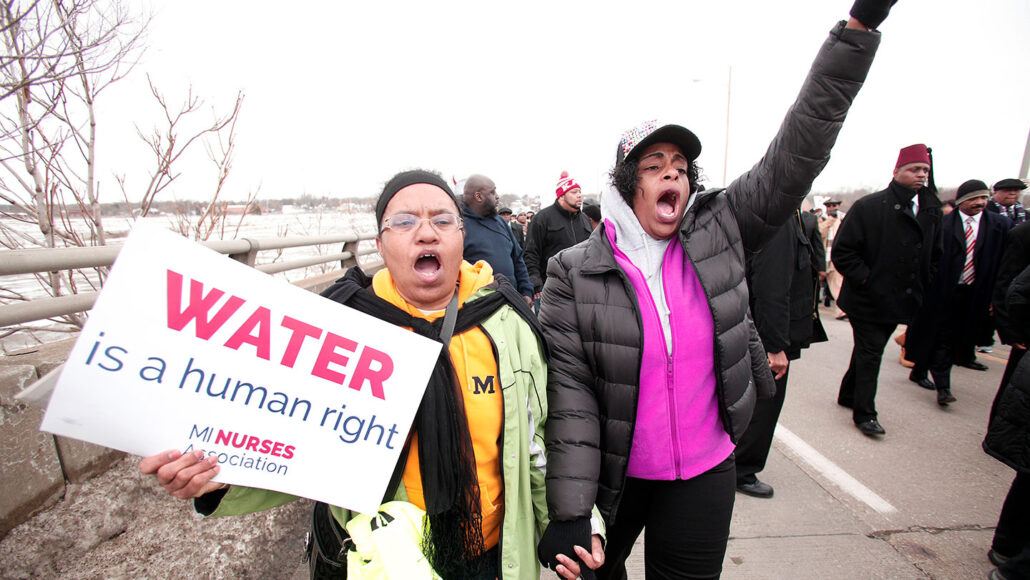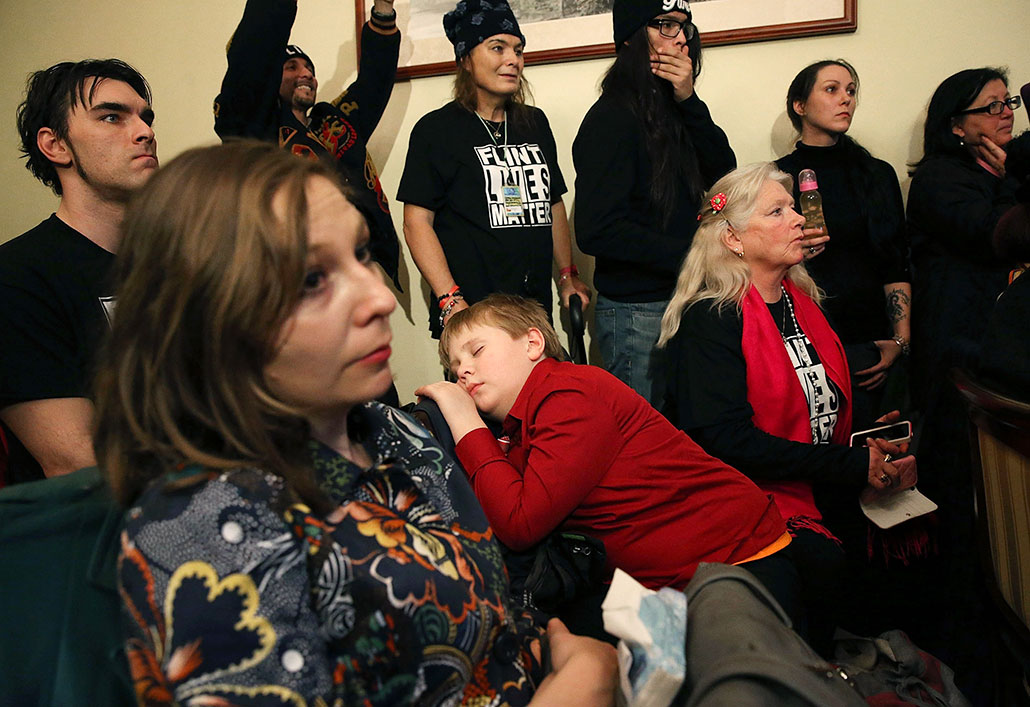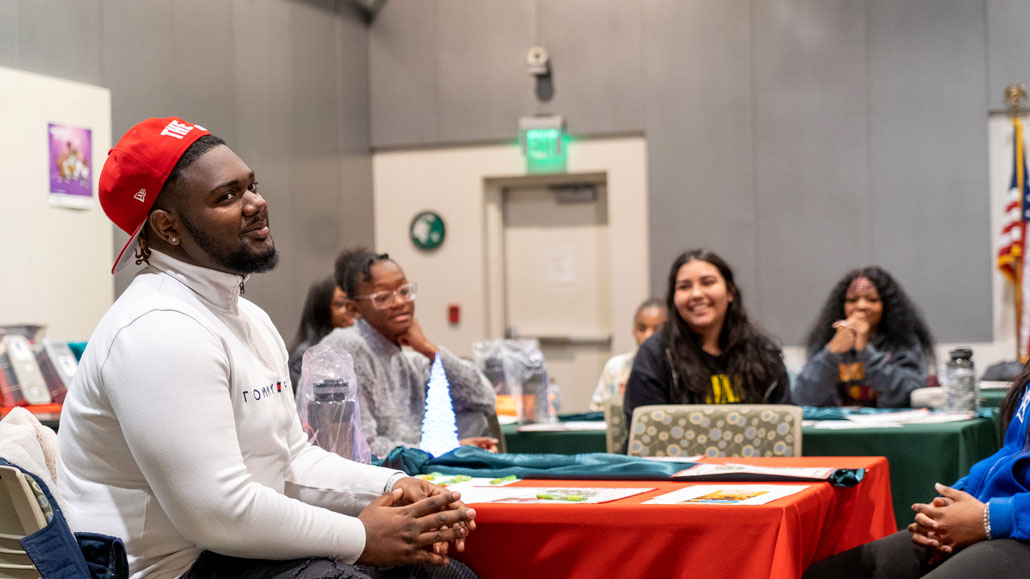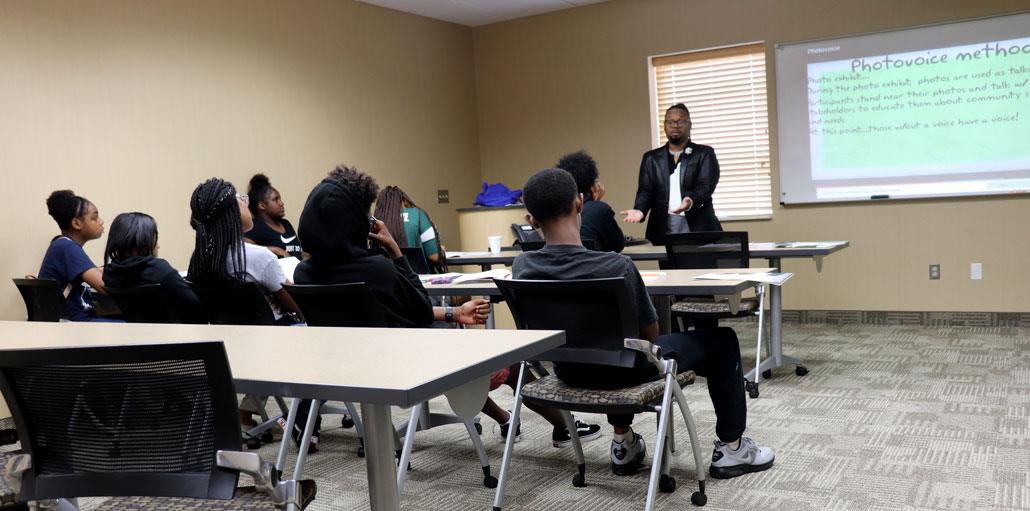Community action helps people cope with Flint’s water woes
City residents find healing in activism, social media campaigns and public education

Community members took part in a mile-long protest march in Flint in 2016. Their goal was to highlight Flint’s water crisis and get clean water for the city’s residents.
Bill Pugliano/Stringer/Getty Images News
April 25, 2014, proved a fateful day for Flint, Mich. That’s when this city switched the source of its drinking water. Before that date, it came from the city of Detroit. Now it was being drawn from the nearby Flint River. The river water was polluted, and the city’s treatment plant failed to make it safe. The contaminated water corroded water pipes, allowing lead to leach from the pipes. That lead posed unexpected risks to the whole community.
A decade later, the city has water from Lake Huron again. And almost all lead water pipes have been replaced. Yet people are still trying to cope with the aftermath of the water crisis. (See accompanying story.)
One major program to help city residents is known as the Flint Registry. It tracks people’s health problems, including lead exposure and other issues linked to the water crisis.
City residents called for such a program as they were first trying to understand what happened to their water, notes Nicole Jones. She’s an epidemiologist, or disease detective, in Flint. She works for Michigan State University and the Hurley Children’s Hospital Public Health Initiative. Her work has focused on identifying impacts of the lead crisis on Flint residents’ health.
This registry offers other benefits, too. It connects people to resources on health, diet, educational services and more. Indeed, research has shown that early-childhood learning programs and other services may help reduce some of lead’s harmful impacts.

Part of Flint’s recovery also has been helped by encouraging residents to speak up. Programs ask them to voice their concerns, experiences and suggestions.
To aid in that, Flint has created a community advisory board. It provides input to the Flint Registry. It also helps inform folks of activities and services that may benefit people harmed by the water crisis. And a pediatric public-health initiative developed by Michigan State University and Hurley Children’s Hospital offers a parents’ advisory group.
Teens get to weigh in, too
There’s even a youth advisory group, Jones notes. It’s called the Flint Youth Justice League. Members share their perspectives on various issues with experts at the pediatric public health initiative. They have also shared their views for “State of Flint Kids” reports.
Everett Graham and Melodie Marsh are two college students who grew up in Flint. So they and their families were exposed to Flint’s tainted water. Both students have been involved for several years in the Flint Public Health Youth Academy. It runs summer programs on health issues. Members also make YouTube videos. Their topics range from environmental justice to gun violence. Teens hold educational programs for other students as well.
Through the program, says Marsh, “It’s just amazing to me how much you connect with other people.” For example, she saw other teens wanting to come up with solutions for gun violence. That, she says, “just inspired me to do more work” on that issue. She’s studying health sciences now at Howard University in Washington, D.C., with hopes of going to medical school.

Graham says the group also “kind of serves as a second family” to him. More importantly, he says, its activism and social-media campaigns can help change lives. He attends Michigan State University in East Lansing and hopes to become a lawyer.
Some programs reach people outside Flint, too. For instance, the public health youth academy has been helping people who lost limbs work to develop advocacy skills. Graham and others from the Flint group also talked about their academy’s work at the American Public Health Association’s annual meetings in 2022 and 2023. Most attendees were public health experts. Yet, “we were able to teach them things,” says Graham.
As he sees it, speaking out on issues you care about matters.
“Although you’re just one person, your voice can be used to reach thousands of people,” Graham says. They, in turn, can reach many others. “And that’s how things spread, and we are able to change things.”








